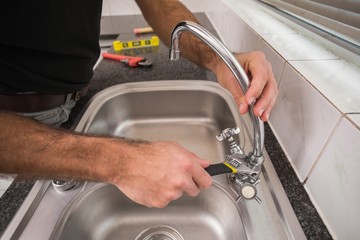In the intricate medical specialties, dermatology emerges as a beacon of expertise dedicated to the complex biology and health of the skin, hair, and nails. Armed with specialized training and a profound understanding of cutaneous pathology, dermatologists play a pivotal role in diagnosing and treating an extensive array of dermatologic conditions.
From common ailments like acne and eczema to rare autoimmune disorders and skin cancers, dermatologists are at the forefront of safeguarding skin health and enhancing patients’ quality of life. To learn more, visit https://www.montgomerydermatologists.com/.
Dermatology encompasses a vast spectrum of conditions that affect the integumentary system, comprising the skin, hair, and nails. The skin, the body’s largest organ, serves as a vital barrier against external threats while regulating temperature and facilitating sensory perception. Dermatologists possess a nuanced understanding of the intricate anatomy and physiology of the skin, allowing them to identify and address an extensive range of dermatologic concerns. From inflammatory disorders like psoriasis and dermatitis to infectious diseases such as fungal infections and viral exanthems, dermatologists are equipped to diagnose and treat conditions that manifest on the skin’s surface.
Educational Journey
The journey to becoming a dermatologist is marked by a rigorous and multifaceted educational trajectory that spans several years. Aspiring dermatologists typically begin their academic pursuits with a bachelor’s degree in a relevant field, laying the groundwork for their future medical career. Subsequently, they undergo intensive training at medical school, where they acquire a comprehensive understanding of human anatomy, physiology, and pathology. Following medical school, aspiring dermatologists embark on a residency program in dermatology, immersing themselves in clinical rotations and didactic learning under the mentorship of seasoned dermatologists. For those seeking additional specialization, fellowship programs offer opportunities to delve deeper into subspecialties such as pediatric dermatology, dermatopathology, or cosmetic dermatology.
Diagnostic Expertise
A hallmark of dermatology is the emphasis on visual diagnosis, wherein dermatologists rely on keen observation and clinical acumen to discern subtle clues and patterns presented by various skin lesions. Armed with dermatoscopes and other advanced imaging tools, they scrutinize lesions at a microscopic level, distinguishing between benign and malignant growths with precision. This diagnostic prowess is particularly critical in the early detection of skin cancer, where timely intervention can significantly impact patient outcomes. Moreover, dermatologists are adept at recognizing cutaneous manifestations of systemic diseases, underscoring the interconnectedness of dermatology with other medical specialties.
Therapeutic Modalities
Dermatologists employ a diverse array of therapeutic modalities to address dermatologic conditions, tailored to the individual needs and preferences of each patient. Topical treatments, such as corticosteroids, retinoids, and antimicrobial agents, are commonly prescribed for conditions like acne, eczema, and fungal infections, offering targeted relief with minimal systemic side effects. For more complex or recalcitrant cases, systemic therapies including oral medications, biologic agents, and immunomodulators may be indicated to achieve disease control and improve patient outcomes. Additionally, procedural interventions such as cryotherapy, laser therapy, and surgical excision are employed for both therapeutic and cosmetic purposes, providing patients with comprehensive care options.
Cosmetic Dermatology
In addition to medical dermatology, many dermatologists offer cosmetic services aimed at enhancing the appearance and texture of the skin. Cosmetic dermatology encompasses a wide range of procedures designed to address aesthetic concerns and rejuvenate the skin’s appearance. From injectable neurotoxins like Botox and dermal fillers to laser resurfacing treatments and chemical peels, cosmetic interventions can effectively mitigate signs of aging, restore facial volume, and improve skin tone and texture. While cosmetic procedures may not be medically necessary, they can significantly enhance patients’ self-esteem and quality of life, underscoring the integral role of dermatologists in promoting holistic well-being.
Pediatric Dermatology
Children are not immune to dermatologic conditions, and pediatric dermatologists specialize in diagnosing and treating dermatologic conditions specific to infants, children, and adolescents. From common childhood rashes and infections to congenital skin disorders and birthmarks, pediatric dermatologists address a broad spectrum of conditions that impact the pediatric population. Their expertise extends beyond clinical care to include counseling and education for parents, empowering them to manage their child’s skin health effectively. By providing compassionate and comprehensive care, pediatric dermatologists play a crucial role in ensuring the dermatologic well-being of pediatric patients and supporting their families throughout the treatment process.
Dermatopathology
Dermatopathology is a subspecialty of dermatology that focuses on the microscopic examination of skin biopsy specimens. Dermatopathologists are skilled in interpreting tissue samples obtained from skin lesions, providing valuable insights into the underlying pathology. By correlating clinical findings with histopathologic features, dermatopathologists play a pivotal role in confirming diagnoses, guiding treatment decisions, and elucidating the molecular mechanisms of cutaneous diseases. Their contributions are indispensable in unraveling the complexities of dermatologic conditions and advancing our understanding of skin biology and pathology.
Research and Innovation
The field of dermatology is characterized by ongoing research and technological advancements aimed at improving patient care and outcomes. Dermatologists actively engage in clinical trials, translational research, and collaborative endeavors to develop novel treatments and therapeutic strategies for dermatologic conditions. From elucidating the molecular mechanisms of skin diseases to exploring innovative modalities such as gene therapy, immunomodulation, and targeted biologic agents, research endeavors in dermatology hold promise for revolutionizing patient care and shaping the future of skincare. By harnessing the power of innovation and scientific inquiry, dermatologists strive to address unmet needs in dermatologic care and enhance the quality of life for patients worldwide.
Addressing Health Disparities
Despite significant advances in dermatologic care, disparities in access to dermatological services persist, particularly among underserved and marginalized populations. Socioeconomic factors, geographic barriers, cultural beliefs, and systemic inequities can hinder individuals from seeking timely dermatologic evaluation and treatment. Dermatologists play a crucial role in addressing these disparities by advocating for equitable access to healthcare services and implementing outreach initiatives to underserved communities. By promoting dermatologic education, raising awareness about skin health, and providing culturally sensitive care, dermatologists strive to reduce disparities and ensure that all patients receive the dermatologic care they need and deserve.
Dermatology encompasses a dynamic and multifaceted field dedicated to the health and well-being of the skin, hair, and nails. Dermatologists, with their specialized training, diagnostic expertise, and commitment to patient care, serve as the guardians of skin health, addressing a wide spectrum of dermatologic conditions with compassion and precision. From medical dermatology and cosmetic procedures to pediatric dermatology, dermatopathology, and beyond, dermatologists play an indispensable role in promoting skin health, enhancing quality of life, and advancing scientific knowledge in the field. As the field of dermatology continues to evolve, dermatologists remain at the forefront of innovation, driving advancements in research, education, and patient care to meet the evolving needs of patients and communities worldwide.













